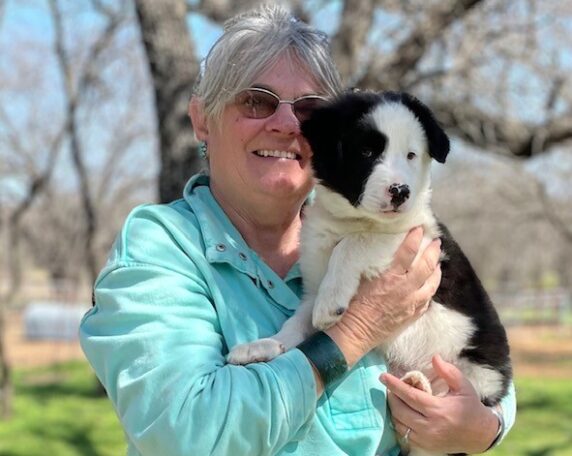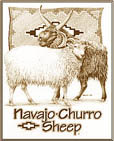Sheridan Rowe Langford
Flock Size: Runs between 30-40 head.
How long have you had sheep: I have raised Dorper sheep for approximately twelve years. I got my first Navajo-Churro sheep in 2015.
Why is the N-CSA important: I feel that the N-CSA is so vital not just as an organization for registering breeding stock and recording pedigrees, but for educational purposes as well. Our website is one of the first places that people explore when researching this breed. It also provides an excellent launch point for new breeders. The N-CSA constantly seeks new ways to educate, enrich, and provide resources for breeders through their presentations, DVDs, posters, and pamphlets. Whenever I am approached by
new people interested in our breed, the very first place I send them for information is the N-CSA website, and I encourage everyone who buys sheep from me to join the organization.
What are some of your ideas for the N-CSA: One of the things that first attracted me to the breed was their versatility and I’d like to see more focus on that. In addition to raising sheep for breeding stock and butcher lambs, I also make and sell woven products from my own fleeces. By processing my fleeces and then using that fiber for rugs, shawls, and wraps, it gives me a better understanding of the properties of a good fleece and thus enhances my breeding program.
That said, although a good chunk of my farm income is derived from the sale of woven products and fleeces, the bulk of my farm profit comes from the sale of sheep milk soap. I milk roughly ten ewes and have yearlings and weanlings in training. Because sheep milk is higher in fat content than my traditional goat milk soap, soap made with the same recipe results in a creamier bar with more lather when I use sheep milk. Customers prefer it. Most of these customers have never heard of a Navajo-Churro sheep, but once they try the soap, they are googling the breed with great interest. Because our breed has not been bred primarily as a dairy animal, they don’t produce the volume of milk that a dairy goat would produce, but the milk is sweet and creamy with no gamey taste that occasionally people find distasteful in some goat milk.
I am regularly contacted by both homesteaders and Navajo-Churro breeders wondering if this sheep could work for them, or if they can milk the ewes they are already breeding. My goal is always to explain that my flock is nothing special, it is just like every other flock of churros. They are not tame, and yet they are easily milked. Navajo-Churro sheep are very versatile and I feel that as an organization we should capitalize on that.
I would also very much like to do more to connect Navajo-Churro breeders with fiber artists that are unfamiliar with our breed. Our breed has so much to offer and yet very few fiber artists tap that. We have many breeders producing quality fiber but they don’t know how to connect with the fiber artists. My goal is to get these two groups together.
To achieve these goals, I’d like to see more educational programs for established breeders and outreach to other organizations showcasing the versatility of our sheep.

